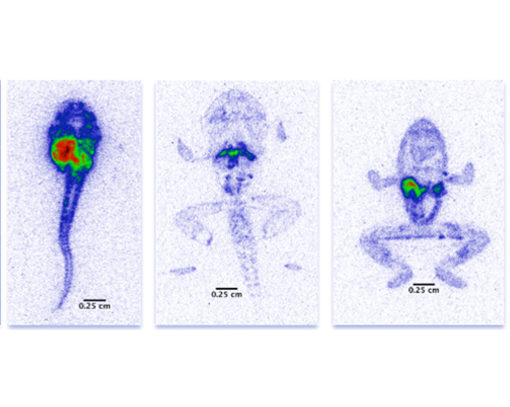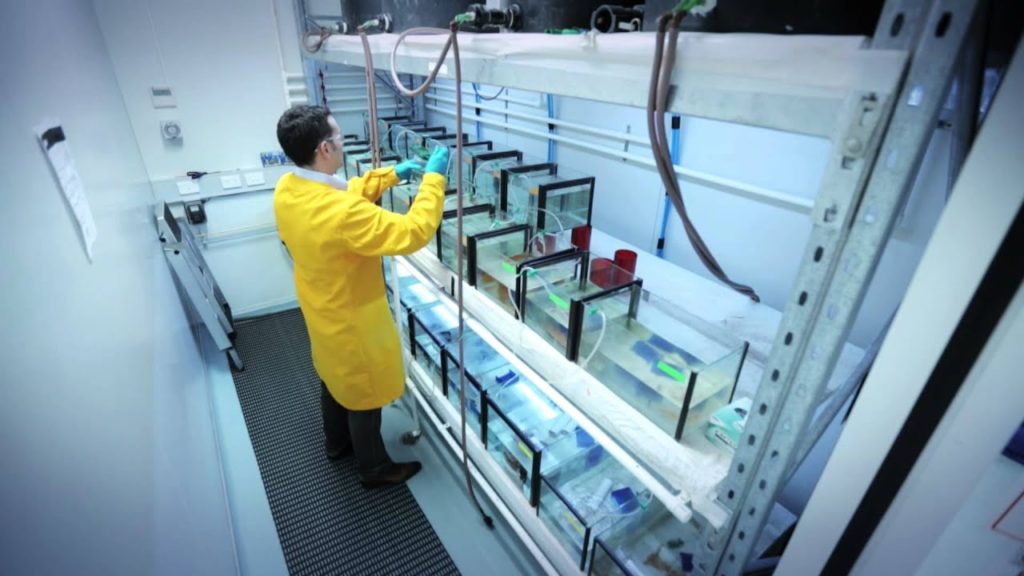
Featured image: Digital autoradiographic false colour phosphor images show selenium radiotracer (75Se; SeIV) distribution in ventral sections of tadpoles at developmental stage 33, 42 and 46 (Gosner, 1960). From Lanctôt et al. 2017 (Environ. Sci. Technol. 2017, 51, 10, 5764–5773).
The Australian Nuclear Science and Technology Organisation (ANSTO) is currently involved in the development and production of radioisotope tracers of mercury, both inorganic and organic (as methyl mercury). This will enable us to accurately trace the fate of inorganic and organic mercury through a series of aquatic organisms under controlled laboratory conditions. This includes the determination of bioaccumulation kinetics (i.e. uptake and loss rates within live individual organisms) from a variety of exposure sources (e.g. from water or food sources) and the internal biodistribution of mercury (i.e. organ distribution) following exposure to environmentally-relevant concentrations. This research will help to refine current water quality guidelines to increase the level of environmental protection.

ANSTO is also working with the offshore oil and gas industry to assist with decommissioning planning. Offshore platforms and pipelines may contain residues of mercury on internal surfaces and we are developing a framework to assess the potential impact to the environment and human consumers of seafood around such infrastructure. This will greatly aid the operator and regulator in conducting a detailed risk assessment for different decommissioning options.
Research by Dr Tom Cresswell’s research group.
